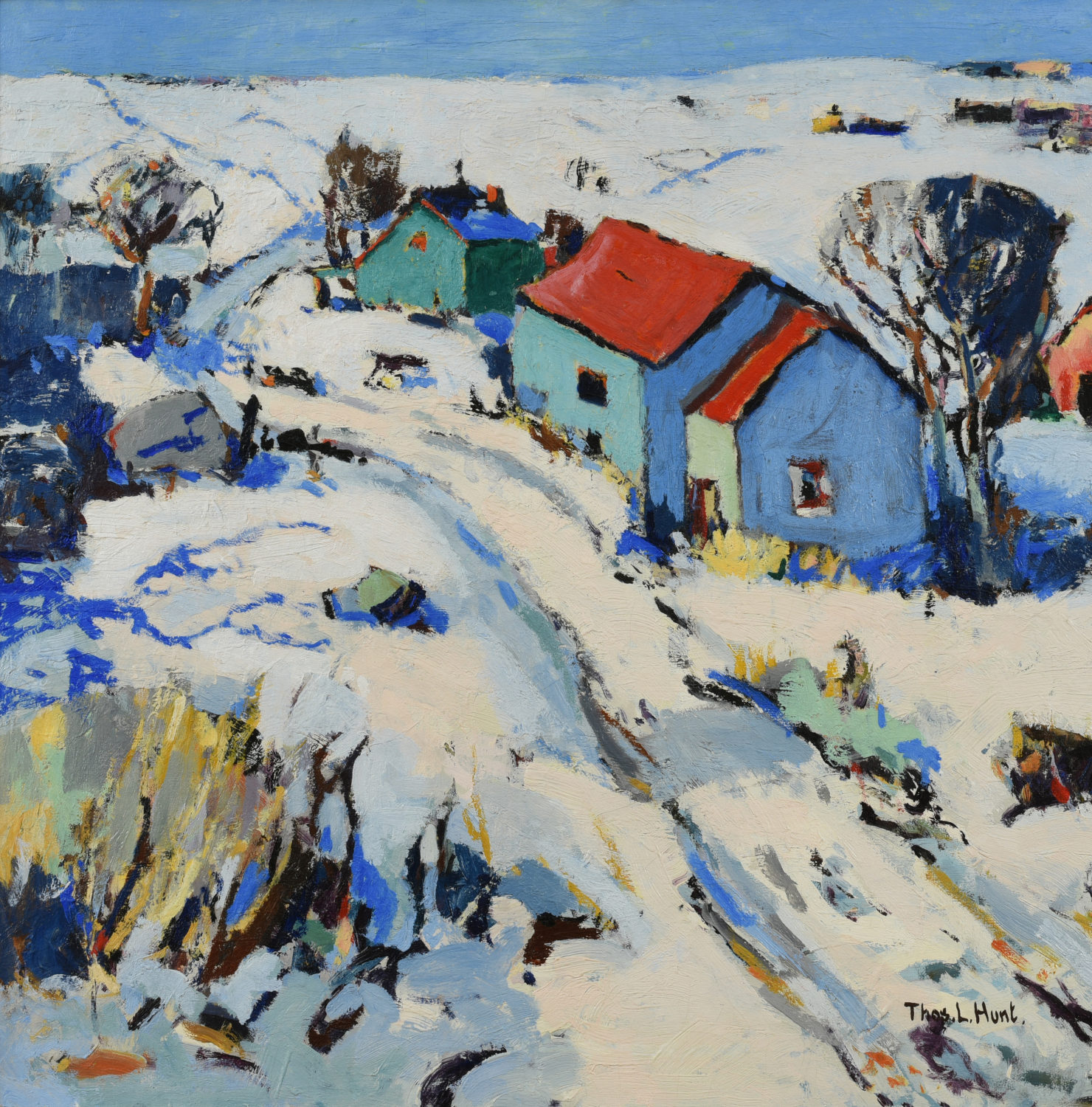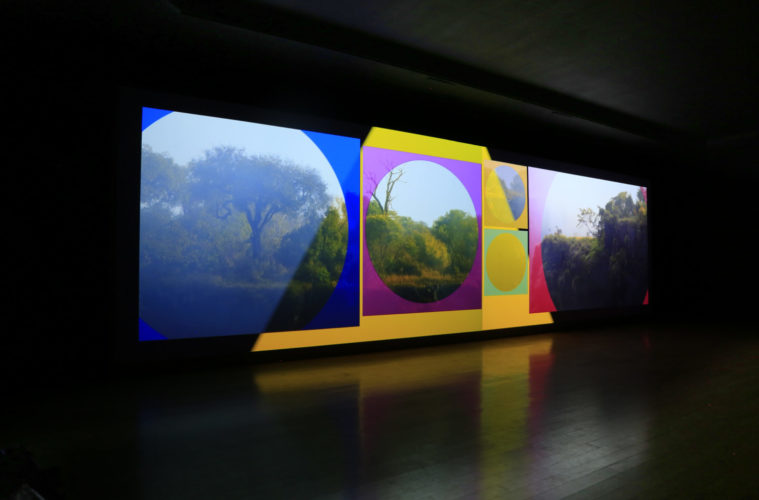Laguna Art Museum’s seventh annual Art & Nature festival, held November 7 through November 10, presented four aesthetically stunning landscape exhibitions, along with family-friendly activities, films and lectures.
Comprising painting, photography, etchings and a film installation, the exhibitions — all on view into January 2020 — explore art’s engagement with the natural world. In comments about the shows, museum executive director Malcolm Warner said that they address the connections of art and science. He added that the Getty Foundation’s third Pacific Standard Time art initiative, “Art x Science x LA,” to open in 2024, will also address the art/science connection.
The exhibition’s mission is in part to explore the conjunctions of art and science, while also raising awareness of environmental issues. To that end, a lecture titled “From Nature to Ecology: The Emergency of Ecocritical Art History,” was presented by Alan C. Braddock, Ph.D. and associate professor of art history & American Studies at The College of William & Mary. Among his prescient remarks was the following: “Is art becoming more urgent and activist in response to the current state of planetary environmental emergency? If so, does this emergency foster diverse forms of aesthetic creativity and experimentation, or does it constrain artists by encouraging only the most blunt and obvious expressions? What, if any, artistic style or styles are emerging?”
The two-channel 4k projection video exhibition, “Yorgo Alexopoulos: 360° Azimuth,” shown in the museum’s largest central gallery, provides a compelling answer to Braddock’s question; the artist combines paintings and drawings (his and those of others) with photography and video filmed in diverse parts of the world, along with large computer-generated graphics in the form of moving reproductions of Euclidean geometric shapes, and haunting new-age type sound.
Azimuth’s continually moving widescreen video brings an artist’s enlightened vision of the outdoors into the indoors. This is the museum’s first art exhibition commissioned by Art & Nature to be shown within the museum walls — not outside on Main Beach, as with previous commissioned installations.
The total effect of this meditative art installation, with its subliminal references to SoCal’s 1960s and ‘70s Light and Space Movement artworks, is subject to personal interpretation. Yet this reviewer found it to be mesmerizing and almost otherworldly, engaging visitors with seeming celestial harmonies. “360° Azimuth” might then provide an answer to lecturer Braddock’s aforementioned question: “What, if any, artistic style or styles are emerging?”

Thomas Hunt,
The Yacht Harbor,
Oil on canvas, c. 1935
28 x 36 inches
Collection of W. Donald Head
Three other landscape-inspired exhibitions in the museum, while more traditional in nature, are a “breath of fresh air” in part because they display not often seen artworks. “Thomas Hunt: California Modernist” features 50 of the relatively unknown artist’s modern art-inspired landscapes, most of them painted in the 1920s and ’30s. These seascapes and landscapes, depicting scenes in New England and along the Southern California coast, employ broad brushstrokes and are inspired by forms and styles from the modern art era (as opposed to the earlier plein air or impressionist style paintings, which the museum so often exhibits). Further, his bright coloration, according to museum director Warner, is similar to that of the early 20th century fauve (meaning wild beast) artists. This show is only the second solo exhibition of this artist’s work.

Laurie Brown,
Las Vegas Periphery: Abandoned Site, 2009
LightJet print,
Courtesy of the artist
“Laurie Brown: Photographs,” on the museum’s lower level, are landscape photos, created in Southern California and in Las Vegas. While described as documenting mankind’s relationship to the landscape, they have no human figures within them. Instead, these often-panorama style pictures depict humankind’s besmirching of the land through aggressive suburban development, alongside contrasting bucolic images of our still virgin landscapes. It is a dramatic exhibition, addressing ecological change, with many photos created before our environmental movement became so prevalent.
“Etchings by Mildred Bryant Brooks,” on this venue’s upper level, rounds out the museum’s Art & Nature exhibitions. The artist’s finely etched landscapes, many depicting pastoral scenes in 20th century Southern California (where the artist lived most of her life until her death in 1995) demand time and attention to fully comprehend, as she was a master printmaker, with a technique reminiscent of Rembrandt and Goya’s.

Thomas Hunt,
Early Spring, Ohio,
Oil on canvas, 1930
28 x 30 inches
Private Collection
Brooks studied classic artistic technique in several SoCal art schools in the 1920s, was a member of the California Society of Etchers, California Society of Printmakers, Chicago Society of Etchers, Society of American Etchers and the Pasadena Society of Artists, and won 22 awards. Her work is included in the Library of Congress.
During the Art & Nature press preview, executive director Warner referenced previous outdoor installations, as part of this annual museum celebration. He discussed and showed pictures of the first installation there by renowned SoCal artist Lita Albuquerque. For her performance, An Elongated Now, on Main Beach in 2014, she assembled 200 volunteers in Heisler Park. She led the volunteers down a winding pathway to the beach; they then walked silently to the water’s edge, following the arc of the shoreline, as the low tide was gently lapping and the sun was falling toward the ocean. At twilight, the artist’s daughter Jasmine ceremoniously moved down the line, tapping each participant on the shoulder, signaling each to switch on a small blue light and to turn slowly. As they rotated, they symbolized harmony within the movement of the earth and the planets.
Local artist Elizabeth Turk’s “Shoreline Project,” held in 2018, also on Main Beach, featured 1,000 performers, each carrying an LED-illuminated umbrella, imprinted with the symmetrical inner structures of shells. The performers walked, skipped and danced on the beach in spontaneous and choreographed movements. They also engaged the visitors on the beach and in the town of Laguna Beach. Choreographer Lara Wilson explained the performers’ dance movements, saying, “I included virtuosic moments to highlight the unique abilities of the dancers, in contrast to the elements — to the high tides, to the sand, and to the darkening sky following the sunset.”
Laguna Art Museum, Laguna Beach; Mon.-Tue. & Fri.-Sun., 11 a.m.-5 p.m.; Thu., 11 a.m.-9 p.m. “Yorgo Alexopoulos: 360° Azimuth” on view through January 5, 2020. “Thomas Hunt,” “Laurie Brown” and “Mildred Bryant Brooks” on view through January 12, 2020. lagunaartmuseum.org/
Advertising disclosure: We may receive compensation for some of the links in our stories. Thank you for supporting Irvine Weekly and our advertisers.

